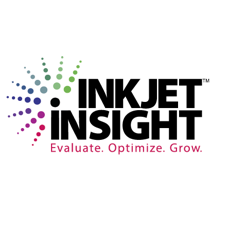As I was walking through an airport on my trek to Hunkeler Innovation Days a couple of weeks ago I saw a billboard with a quote from Albert Einstein:
“Once we accept our limits, we go beyond them.”
It made enough of an impression that I continued to mull on it as I listened to discussions related to the HID19 slogan of “Success with Automation.” There have been a bevy of announcements in early 2019 related to advances in physical automation such as faster printing, printing on new substrates, streamlined finishing as well as workflow management software and automated quality control. All of these have the potential to dramatically improve capacity, productivity and profitability for a printing organization. However, none of them can become a solution until the company acknowledges that there is a problem to be solved.
Many companies look at “workflow” as something to be bought. Some companies understand that an end-to-end workflow is something that must be designed before technology can be applied to the automation of that design. However, few companies have embraced the concept that production workflow in a competitive organization today is something that needs to be continuously improved. Only when we understand and accept the limits of our workflow can we be cognizant of ways to improve it.
Tim Cooper recently wrote a couple of detailed workflow posts for us: Understanding Your Workflow Capacity and Measuring the Capacity of Your Inkjet Workflow. They illustrate the complexity around understanding and managing workflow resources. He talks about understanding your next bottleneck and the corresponding job attributes that will trigger that bottleneck in order to meet SLA performance expectations. However, there is also a need for a longer term view. If you are continuously monitoring your workflow processing and identifying potential bottlenecks, you should not just be planning for the “pinch point,” but also considering the changes to the workflow needed to eliminate them.
Real-time workflow analytics software exists that will automate much of the monitoring described in Tim’s articles, however the data generated from those tools is only useful if it is actually applied to improving the workflow. The technology of production inkjet environments, start to finish, still has some limits – but more often the limiting factor is not the technology, it is the vision, discipline and creativity of the people deploying the technology.
At HID19 I heard several OEMs discuss customers where workflow improvements had generated capacity improvements of anywhere from 40 to 80 percent. Those are big numbers in a high-speed environment. When looking at high speed inkjet, gaining a productivity improvement of just 10 minutes per shift can drop $50k -$100k to the bottom line depending on your print speed and pricing model. Take a look at our calculator to run your own numbers.
All of the major OEMs have strong workflow automation software offerings, and there are independent software purveyors who quote similar statistics. So, if the software is available and the savings and/or profit potential is tangible, why do we find so many situations where no changes are made until the workflow is so under-performing that improvements of more than 40 percent are possible? The opportunity cost of waiting to make improvements until a whole overhaul is needed is huge. Companies must accept that their workflow will always be limited by some factor so that they can continuously pursue opportunities to push those limits and reap the benefits of continuous improvement.
Taking this approach requires more than technical knowledge, it requires imagination. I’ll leave you with another quote from Mr. Einstein: “Imagination is more important than knowledge. Knowledge is limited; imagination encircles the world.”

